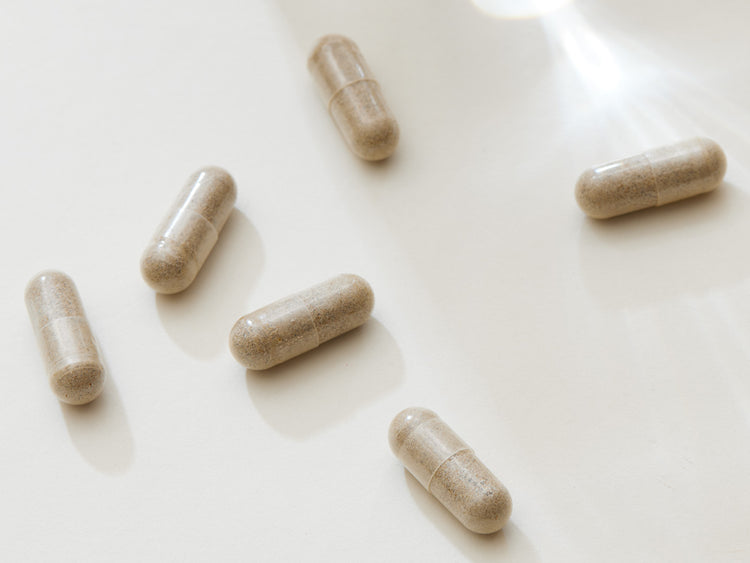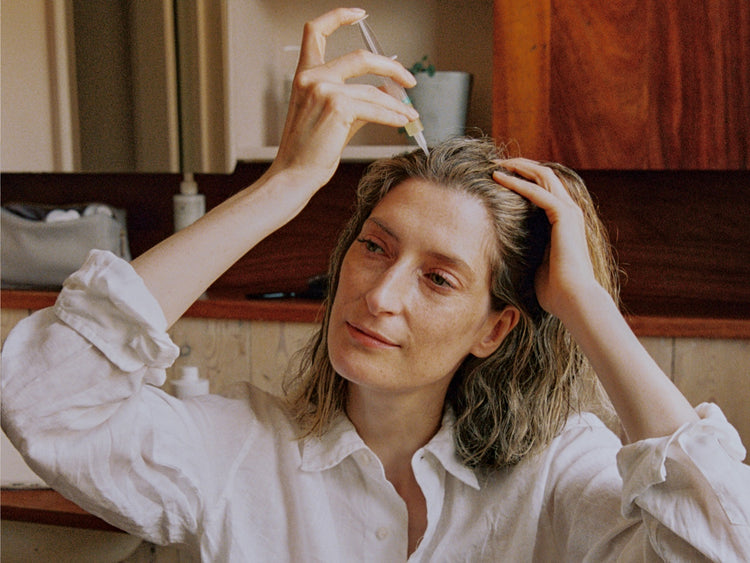Just like hair types and porosity, hair density and thickness can be confusing. While density and thickness are different, they are terms that are often (incorrectly) interchanged, which leads to even more misconceptions and uncertainty. Understanding your hair thickness and density level means you can make informed choices when it comes to products and methods for your scalp and hair care. It can also mean identifying hair thinning and loss sooner – and that could mean that you take action sooner too.
What is hair density?
This refers to the number of hair strands on your scalp per square inch. Genetics determine the level of hair density your body can produce. This is classified as low, medium, or high. People with low hair density have fewer hairs per square inch, while those with high hair density have more hairs per square inch.
What is hair thickness?
This is the actual thickness or diameter of individual strands. Genetics determine whether you have fine, medium, or coarse hair. People with fine hair tend to have more wispy-feeling strands, while those with coarse hair often have strands that feel more dry or rough. Similarly to density, your hair thickness can be influenced negatively by an interaction between your genetics and hormones, leading to miniaturisation of hair follicles and a decline in your strands’ size and length.
What is the average thickness of a strand of hair?
Typically, a hair strand is between 0.03mm and 0.06mm in diameter but some hair type tend to be thicker on average and can be as high as 0.08-0.2mm in diameter. Therefore, the lower end of that scale is thinner/finer, while the higher end is considered thick.
What is the average number of hair strands on the head?
The number of strands an individual will have varies depending on genetics, hormones, and overall health. You might have heard that theaverage number of hairs on an adult’s head is around 100,000, but the truth is that it can range from as little as 30,000 to 200,000 and we’ve found most people are in the range from 80,000 to 150,000. Again, the lower end of this number range means low-density hair, the middle is medium-density and the higher the number, you have high-density hair.
Why are some strands thick and some fine/thin?
The thickness or thinness of hair strands is primarily determined by genetics. You may notice that your hair strands vary in thickness, possibly caused by hair miniaturisation. Due to the interaction between hormones and genetics, miniaturisation is when the hair follicle gradually begins to shrink, and the life cycle of the hair starts to shorten. This means that once the hair falls out, the hair that regrows in its place is of a different quality and grows back at a smaller diameter, taking up less room on the scalp, which results in decreased coverage. As a result, these hairs become thinner, more transparent, and weaker.
How should people with thick or thin strands treat their hair?
You will need a diligent wash and hydration routine to achieve healthy locks, whether you have fine or thick hair. Your shampoo and conditioner should provide a gentle but effective cleanse and hydrate the lengths of your hair from within (rather than coating the strands with silicone, mineral oil, and or similar ingredients).
How do you treat different hair density levels?
Just like hair types and scalp types, each level of hair density requires different treatment.
High-Density Hair
Oftentimes people with higher-density hair will need to cleanse their scalp in sections to ensure a thorough wash. It may also be necessary to use a little more conditioner to ensure all strands are properly saturated.
Medium-Density Hair
Sometimes those with medium-density hair will also benefit from cleansing (and conditioning) in sections to guarantee optimal coverage.
Low-Density Hair
Individuals with lower-density hair can access the scalp more easily, so cleansingisn’t as difficult. For many people, conditioners should be lightweight to avoid weighing strands down.
How can I test hair thickness?
One way to find out if your hair’s thickness is to compare a strand with a sewing thread. When lying next to each other, if your hair appears to have the same diameter as the sewing thread, you have thick hair. If it’s noticeably thinner, you probably have medium to fine hair.
How do I test my hair density?
The scalp and ponytail tests are two easy ways to determine your hair density.
Scalp Test
For the scalp test, take a hand-held mirror and observe the top of your head. If you can easily see your scalp (not including where your hair is parted), you have low-density hair. If you need to move or part your hair in order to see your scalp, you have medium-density hair. If it’s difficult to see your scalp even when parting your hair, you have high-density hair.
Ponytail Test
The ponytail test only works if your hair is long enough to tie up. If your hair is long enough, gently pull it into a ponytail and measure its circumference. If your ponytail is less than half an inch around, you have low-density hair. A circumference of one to one and a half inches indicates medium density. Two or more inches, you have high-density hair.
Hårklinikken’s expert advice:
Your hair thickness and density can be challenging to determine on your own. Hårklinikken’s Hair Specialists are trained extensively to understand all things scalp and hair. At our consultations, we analyse your scalp and hair – including the quality of your hair, thickness of strands, your hair density, and potential hair thinning. If you’re curious about how to get the hair you’ve always wanted, book a consultation.

Ready to Improve Your Scalp & Hair Health?
Our Hair Supplement is designed to promote stronger, fuller, healthier hair growth and is part of the entire Hårklinikken scalp and hair care system.
Unsure where to start? Book an in-person consultation or take the virtual Hair Assessment.






